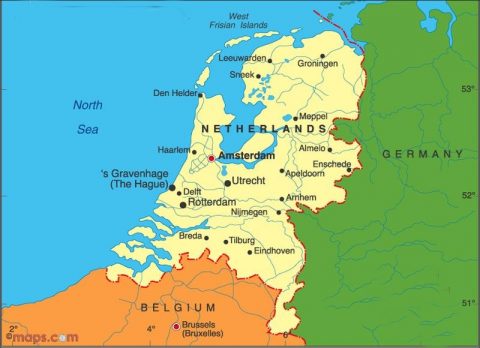Official name: Dutch Koninkrijk der Nederlanden (Kingdom of the Netherlands)
Entry requirements: Passport
Population: 14,000,000 +
Capital: Amsterdam (population: (2000e) 746 000), though The Hague is the political capital.
Currency: 1 euro = 100 cents
Political system: Constitutional Monarchy
Religions: Protestant (30%) and Roman Catholic (38%)
Date of independence: 1830
Language: Dutch (English widely spoken in cities)
Public holidays: 1 January; Good Friday; Easter Monday; 30 April; Ascension Day; Whit Monday; 25, 26 December
Most of Holland’s major cities are concentrated in the flat Protestant west where one has visions of windmills, tulips and clogs. However, not all of Holland is like this; the south is very different: the land is not all flat, and many of the people are Catholic and much more like the French in many respects.
Under the Burgundians and the Habsburgs, Holland was politically linked to Belgium to form the Netherlands (lowlands). Then the Spanish King Philip II started to levy heavy taxes to pay for his army, fighting for the Catholic cause in Europe. As the northern Netherlands had mostly become Protestant by this time, you can imagine this didn’t go down too well. Philip tried to smooth things over by sending in Spanish governors. This was the last straw for the Dutch who, under William of Orange, fought the Eighty Years War against the Spanish, emerging as an independent country in 1648.
After this, the Dutch really got it together for the remainder of the seventeenth century and showed the rest of Europe a thing or two about seafaring and commerce. At the same time, Rembrandt et al. were hard at work creating the Dutch golden age of arts and science. Symbolically, Holland’s eclipse by Britain in the eighteenth century was begun by William III moving across to England to share the throne with Mary. After the Napoleonic Wars and French domination, life for the Dutch gradually developed into parliamentary democracy.
Hits: 105
